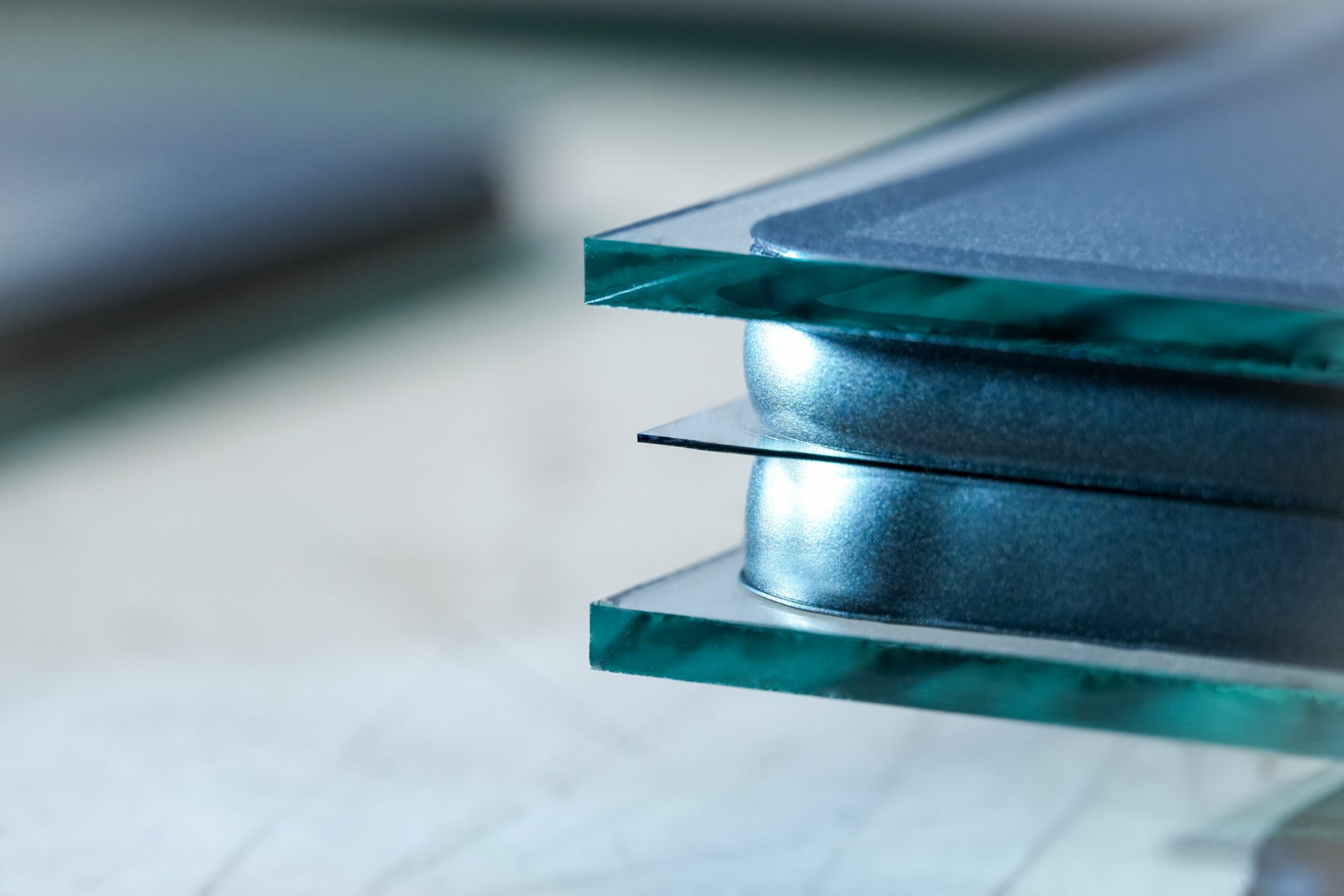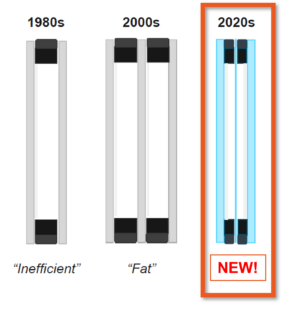
Der Bedarf an einer besseren Wärmeleistung bei Isolierglas-Einheiten (IG) ist größer denn je. So wurde beispielsweise in den Energy-Star-Richtlinien 2024 in den USA ein neuer maximaler U-Wert von 1,05 W/m²K festgelegt. Ein U-Wert misst, wie gut ein Fenster gegen Wärmeverluste isoliert; eine niedrigere Zahl bedeutet, dass weniger Wärme aus einem Gebäude entweicht. Für viele Hausbesitzer und Bauherren besteht die Herausforderung darin, veraltete Fenster mit geringer Effizienz zu modernisieren, ohne den Austauschprozess zu verkomplizieren. Die Lösung? Dünne Dreifach-Isolierglas-Einheiten.
Die Bemühungen um eine verbesserte Energieeffizienz von Gebäuden haben diese Art von Glas zu einem heißen Thema in der Branche gemacht. Diese Entwicklung gewinnt rasant an Fahrt – und das aus gutem Grund.
Dreifach-IG-Einheiten mit Dünnglas bieten Hochleistungsverglasung in einem schlankeren, effizienteren Paket.
Diese Einheiten bieten viel bessere U-Werte als herkömmliche Zweifach-Verglasungen – und lösen gleichzeitig die Probleme der Dicke und des Gewichts.
Dreifach-IG-Einheiten mit Dünnglas eignen sich besonders gut für den Einsatz in Wohngebäuden, sowohl bei Neubauten als auch bei Renovierungen. Bei Neubauten vereinfacht ihr geringes Gewicht den Transport und die Installation. Und funktionale Probleme wie die Schließprobleme bei schweren Schiebefenstern können beseitigt werden.
Sie sind jedoch besonders bei Renovierungen von Vorteil, bei denen der Austausch ineffizienter Zweifach-IG-Einheiten durch herkömmliche Dreifach-IG-Einheiten oft eine Herausforderung darstellt. Dreifach-IG-Einheiten mit Dünnglas bieten nicht nur eine deutliche Leistungssteigerung gegenüber Zweifach-IG-Einheiten, sondern passen auch perfekt in vorhandene Fensterrahmen, sodass sie sich ideal für einfache Fenster-Upgrades eignen.
Isolierglas hat sich seit seiner ersten Verwendung erheblich weiterentwickelt. In den 1980er Jahren waren Isolierglas-Einheiten in der Regel etwa 20 mm dick. In den 2000er Jahren kamen dann Low-E-Dreifach-IG-Einheiten mit einer Dicke von etwa 36 mm auf den Markt. Diese Dreifach-IG-Einheiten boten eine verbesserte Isolierung, waren aber auch 50 % dicker und schwerer.
Der vielleicht wichtigste Unterschied zwischen Dreifach-IG-Einheiten mit Dünnglas und ihren herkömmlichen Pendants ist die Dicke. Bei herkömmlichen Dreifach-IG-Einheiten bestehen die äußeren Scheiben in der Regel aus 3 bis 4 mm starkem Glas und die mittlere Scheibe aus 3 mm starkem Glas. Im Gegensatz dazu wird bei dünnen Elementen für die mittlere Scheibe ein sehr dünnes, 0,5 mm starkes Glas verwendet. Durch diese Verringerung der Dicke wird das Element leichter, schlanker und kompakter.
Mit einer Gesamtdicke von nur 24,5 mm bieten Dreifach-IG-Einheiten mit Dünnglas immer noch die gleiche hohe Leistung wie herkömmliche Dreifach-IG-Einheiten.
| Jahr | 1980er | 2000er | 2024 |
| Glasart | Zweifach-Isolierglas | Low-E Dreifach-Isolierglas | Dreifach-Isolierglas mit geringer Dicke |
| Gesamtdicke [mm] | 20–24 | 36 (+50%) | 24.5 (-32%) |
| Gesamtgewicht [kg] | 20 | 30 (+50%) | 21 (-30%) |
| U-Wert [W/m²K] | 1.2 | 0.6–0.8 (-50%) | 0.7–0.9 (geschätzt) |

Die Entwicklung von Dreifach-IG-Einheiten mit Dünnglas erforderte die Überwindung erheblicher technischer Herausforderungen. Herkömmliche Fertigungsmethoden, bei denen Abstandhalter zuerst auf die mittlere Glasscheibe aufgebracht werden, erwiesen sich für Dreifach-Isolierglas mit Dünnglas als ungeeignet. Wenn 100 °C heißes TPS®-Material auf empfindliches 0,5 Millimeter dickes Glas aufgebracht wird, verbiegt sich die Scheibe, sodass der herkömmliche Ansatz nicht praktikabel ist.
Eine neuartige, von Glaston entwickelte und patentierte Produktionstechnologie bringt zunächst Abstandhalter auf den dickeren Außenscheiben an. Dieser Ansatz verändert den Prozess vollständig, minimiert die Belastung der dünnen Mittelscheibe und reduziert das Bruchrisiko. Das Verfahren ermöglicht die automatische Produktion von Dreifach-IG-Einheiten mit Dünnglas – etwas, das derzeit außer Glaston niemand sonst anbietet bzw. anbieten kann.
Die TPS®-Technologie spielt bei der Produktion eine entscheidende Rolle. Durch die Gewährleistung außergewöhnlich hoher Isolationswerte und Gasdichtigkeit verbessert sie die Leistung dieser IG-Einheiten messbar. Darüber hinaus reduziert das vollständig automatisierte System den Bedarf an manueller Handhabung – ein wesentlicher Faktor angesichts der Empfindlichkeit von Dünnglas.
Dreifach-IG-Einheiten mit Dünnglas bieten heute die gleiche oder eine bessere Leistung zu geringeren Kosten und stellen eine praktikable Alternative zu Vakuumglas dar – einer weiteren trendigen, aber kostspieligen Verglasungsoption.
Fortschritte wie diese sind entscheidend, um der Welt zu helfen, die wachsende Nachfrage nach energieeffizienteren Häusern zu decken.
Was könnte als Nächstes kommen? Wird Dünnglas mit vierfacher Verglasung die Grenzen der Energieeffizienz noch weiter verschieben? Wir würden uns freuen, Ihre Meinung zu hören.
Wenn ja, dann hat Glaston bereits heute eine Lösung für Vierfach-IG-Einheiten mit Dünnglas parat.
Für den Glastory-Newsletter anmelden
Wir beantworten Ihre Fragen zur Glasverarbeitung. Teilen Sie uns Ihre Herausforderungen mit und wir versprechen, unser Bestes zu tun, um Ihnen zu helfen.
Comments are closed.